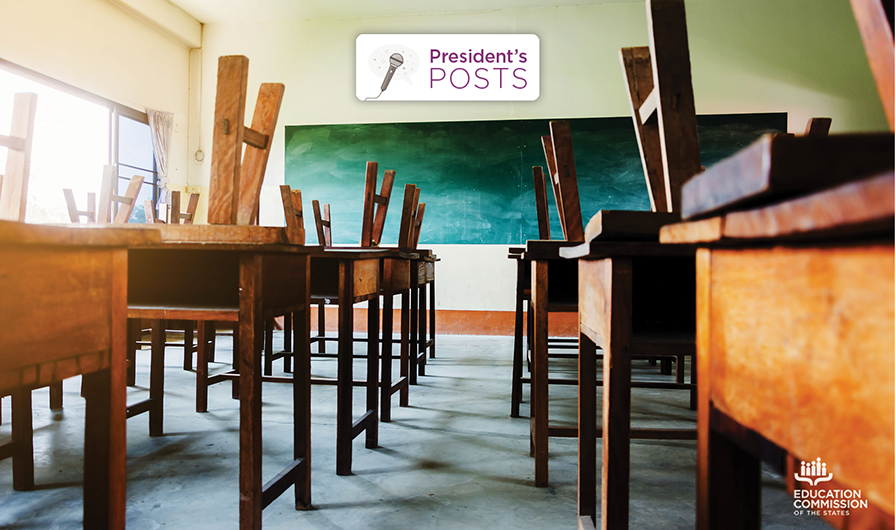Every child deserves to attend a school with a safe and supportive environment. It is that core belief that led the Council of Chief State School Officers last year, following school shooting tragedies, to form a School Safety Steering Committee to identify and share promising school safety and supportive school climate practices.
It’s also why CCSSO joined together with Education Commission of the States to capture current state laws on a variety of issues related to school safety, an issue it has tracked for more than two decades. This 50-State Comparison on K-12 School Safety is a valuable tool that allows analysis of key state requirements around school safety plans, audits and drills, in addition to school resource officers and weapons in schools.
We are now sharing it more broadly, so more states and education policy leaders can gain a better understanding of the spectrum of approaches states are taking to ensure safe schools.
The 50-State Comparison of policies in state statute and regulation shows that:
- Nearly all states have laws requiring school safety plans, and most of those require that law enforcement be involved in development of the plans. A growing number of states have state-level requirements for school facility safety audits, and we know many schools and districts are doing these types of audits even in states that don’t require it.
- While school resource officers in most states are law enforcement officers, a few states have created programs that expand the pool of who may serve in this capacity. For example, in South Dakota, school sentinels are school employees, hired security personnel or volunteers who undergo at least 80 hours of training to provide deterrence and defense at schools. In Texas, a school employee appointed by a district board of education may serve as a school marshal after completing training that includes child development and psychology, conflict resolution, de-escalation techniques and mental health crisis intervention, among other things. Most recently, the Florida legislature created a school guardian program, allowing school employees to volunteer to aid in prevention or abatement of assailant incidents, though teachers are prohibited from serving as guardians.
- Laws addressing weapons in schools are often a complicated mix of state education and criminal codes that interact in various ways with federal law. As such, Education Commission of the States concentrated its analysis on state laws that explicitly address weapons in schools. To make the information digestible, laws are split into four categories and many states fall into more than one. The 50-State Comparison includes state laws that explicitly address possession of weapons by school resource officers, by school employees and by concealed carry permit holders, as well as laws that allow school districts or schools to decide whether to allow weapons in their schools. The question of the day is, “How many schools have weapons in them?” and the answer is, “We don’t know.” Just because a state’s law allows weapons in schools doesn’t mean they are there.
Over the past 12 months, Education Commission of the States has responded to more than 45 requests for information on state policies related to school safety (compared with seven requests in the previous three years combined). While more than half were from the media, many were from legislators and state task forces grappling with how to use state policy to address school safety issues. We’re seeing that play out in the 2019 legislative sessions, where policymakers across the country have introduced more than 275 bills related to school safety — and we know this conversation is far from over. We hope this new 50-State Comparison provides a solid foundation of information upon which to build.
It is equally important that we look around the country and identify promising practices that states are using to not only respond to school tragedies, but also prevent them. This led to the creation of CCSSO’s online school safety repository, which shares state-based policies and practices on an array of school safety issues — from the security of facilities to the provision of mental health and counseling services to the integration of instruction that addresses students’ social, personal and emotional needs.
Ensuring a safe school environment requires the exploration of complex challenges, but we know state educators, leaders and policymakers are committed to finding solutions that create safe schools for students and educators. We are proud of the 50-State Comparison and the school safety repository and hope they provide critical and useful information, resources and tools that benefit states’ ongoing safety efforts. Ensuring our schools and classrooms are safe is not done in isolation. It is done collaboratively and involves all of us coming together to create the conditions for students to be successful in life.










